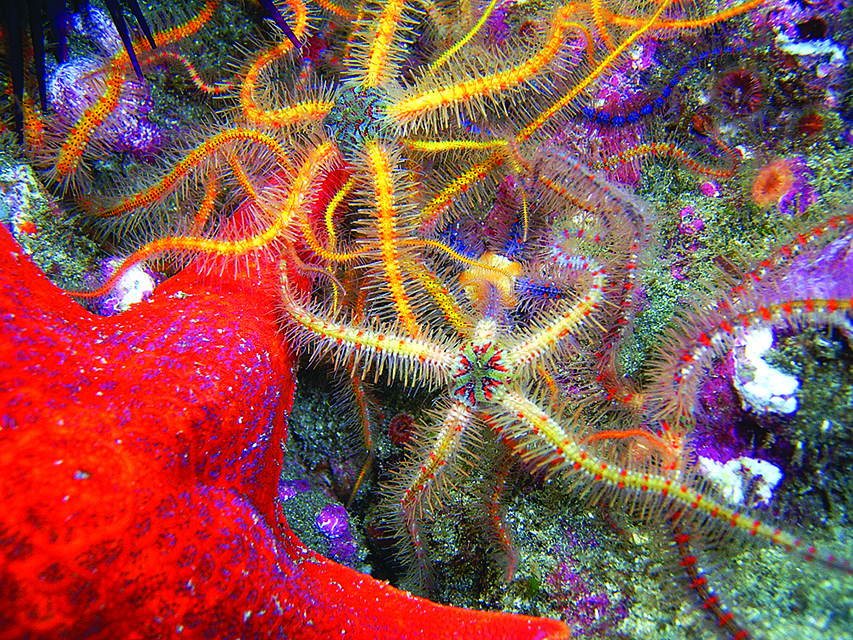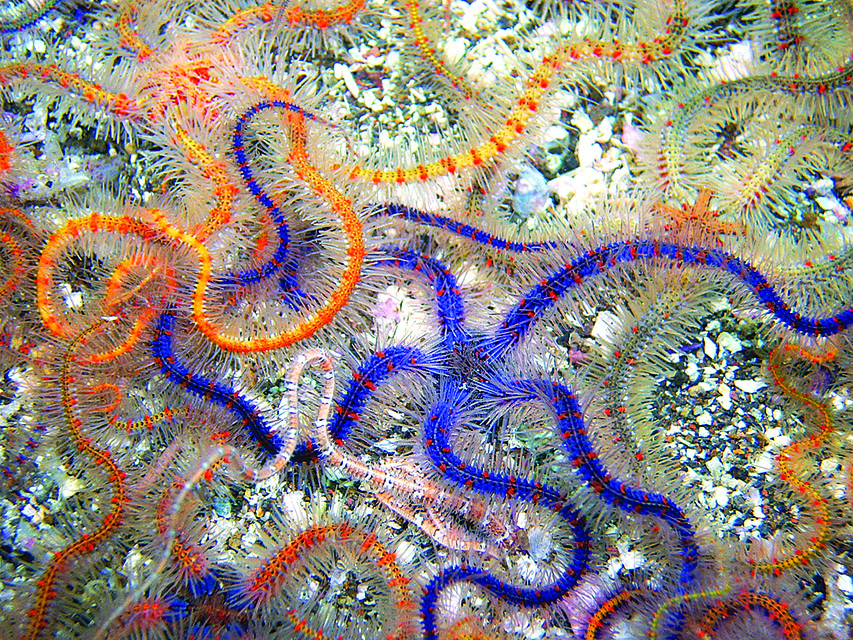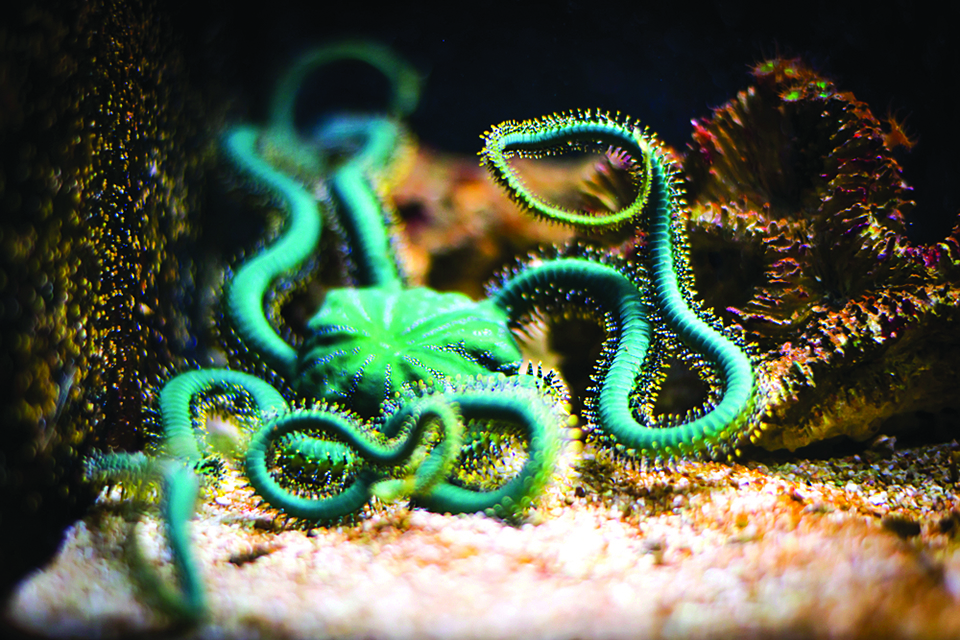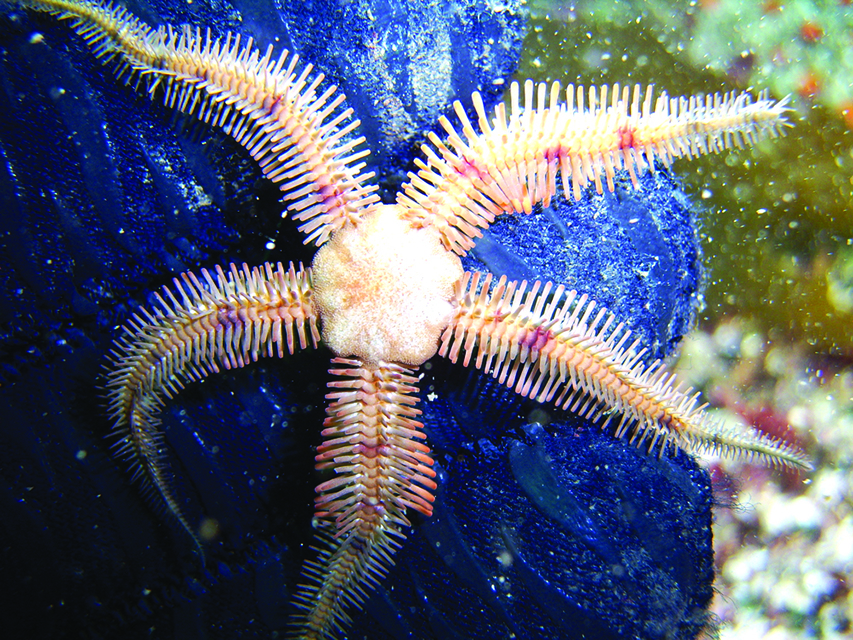The brittle star (Ophiocoma wendtii) has a unique way of seeing the world because it sees with its body instead of with eyes. Evidence suggests that the body of this particular invertebrate can perceive images, although they’re blurry. This gives this creature extraocular vision in the absence of eyes.
Let’s find out how Ophiocoma wendtii sees the world.

BRITTLE STAR VS. SEA STAR
The brittle star and the sea star are both echinoderms who thrive in the marine environment. A brittle star is a close relative of the sea star, but they have different modes of locomotion and body structure to move around.
In addition, they perceive their environment differently. Sea stars have compound eyes at the tip of each arm to create a visual image of their surroundings with each small lens having what is known as ommatidia. On the other hand, the brittle stars have opsins that detect the presence of light.
However, the Ophiocoma wendtii stands out because of its ability to see viable images beyond light perception.
TO SEE IS TO BELIEVE
Do brittle stars have eyes? No, they don’t, but they can perceive light and dark with the presence of opsins. This light and dark perception is enough for some brittle stars to survive, move around, and find shelter.
However, the brittle star species Ophiocoma wendtii is unique from the rest of its kind. It is a brittle star that can see viable but blurry images, allowing the creature to seek shelter more efficiently during the day.

MISSIONAND VISION
It is general knowledge that eyes are necessary for vision in both human and non-human animals. But scientists recently discovered that some species have adapted to see without eyes. Scientists called it having “extraocular vision,” allowing animals to see with alternative body parts that can function similar to the eyes.
It was a team of scientists led by Lauren Sumner-Rooney at the Oxford University Museum of Natural History who hypothesized that the Ophiocoma wendtii could see despite the absence of eyes. To test this, the brittle stars were put in the middle of a marine test area with obstacles and black bars as shelter to find out if they were capable of finding cover. It turned out that the brittle stars were able to find the black bars as shelter with the presence of light. This further strengthens the idea that the brittle star Ophiocoma wendtii can really see viable images.

OPSINS AND CHROMATOPHORESA
Opsins are light-sensitive proteins found on the bodies of the brittle stars that serve as a substitute for eyes and allow brittle stars to see their environment. There are about 13 sequences of opsins that provide extraocular vision to the brittle star.
However, the opsins are affected by the activity of chromatophores in some species. Chromatophores contract and relax to produce color in pigment-containing cells. It is hypothesized that chromatophores affect the availability of light to the opsins, preventing other species of brittle stars to see viable images the same way that the Ophiocoma wendtii can.
Brittle stars have plenty of opsins on their arms and body that allow them to sense light and dark. This gives them visually-guided motion to find cover and move around. Scientific evidence suggests that opsins may be affected by the activity of chromatophores in brittle stars: Some species of brittle stars, especially red ones, are unable to see any viable image at all and are only able to perceive light and dark.

A STAR AMONG STARS
Brittle stars are fascinating creatures who have adapted to see the world in the absence of eyes. They utilize their opsins to create viable images to see the world from their perspective.
Scientists are only beginning to understand how brittle stars perceive the world around them. The Ophiocoma wendtii is a unique brittle star because currently, it is the only one to have extraocular vision not deprived by chromatophore activity.






